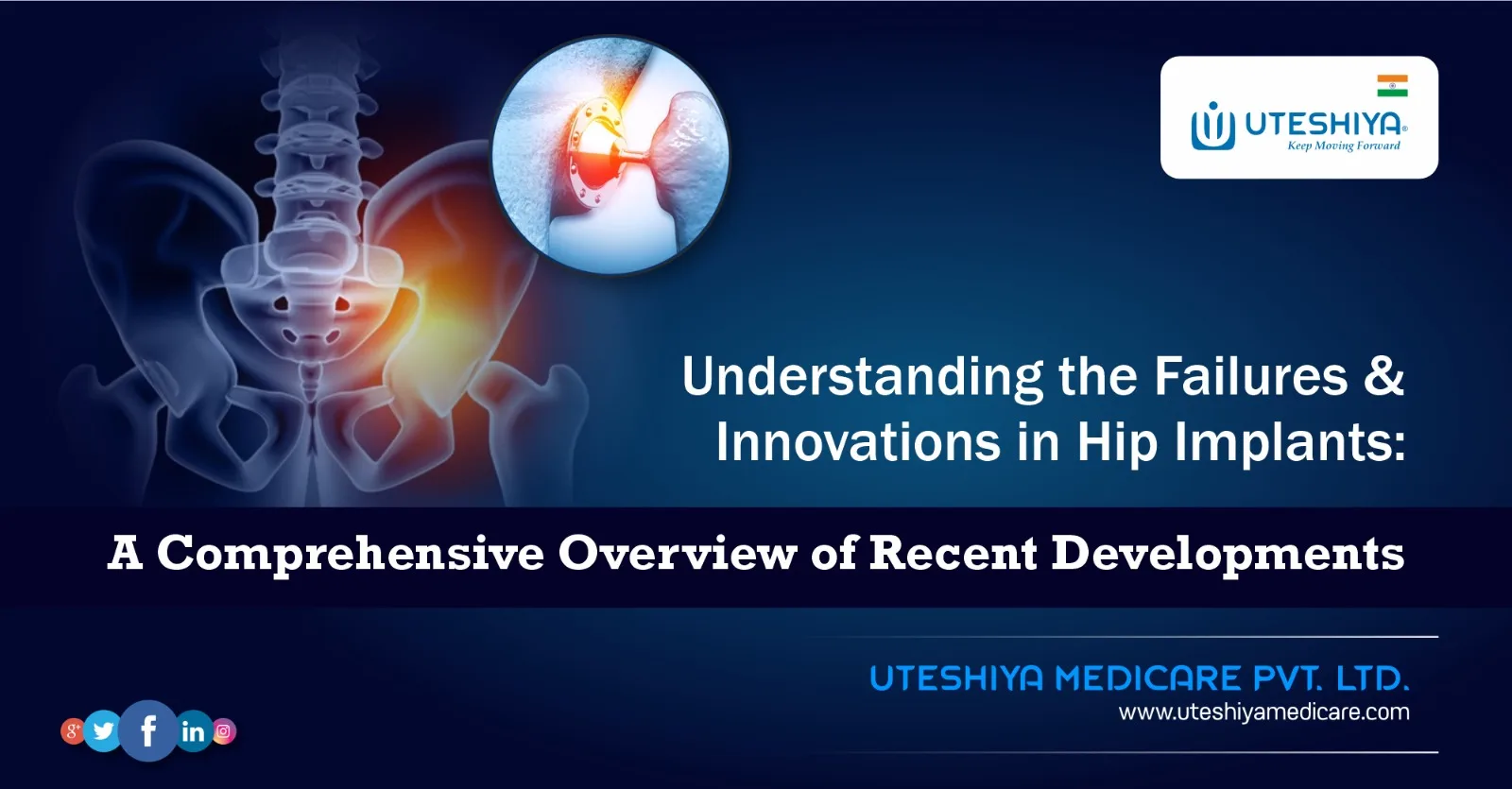
Total hip replacement surgery, also known as THR surgery, has brought relief to millions of patients all over the world. This procedure has revolutionized the treatment of hip joint diseases. Implant failures continue to be an issue despite the fact that the implant has been successful. This has prompted continued research efforts to improve the longevity and function of hip implants.
Understanding the Factors That Contribute to Failure
At the forefront of the investigation of the underlying mechanisms that lead to the failure of implants.
Reasons Why Some Hip Implants Don’t Work
Biological reactions and mechanical problems are two of the several possible causes of hip implant failure. Improving the performance and longevity of hip replacement procedures requires a thorough understanding of these parameters.
1. Deterioration and Failure Due to Wear and Tear
The implant components are susceptible to degradation and failure over time due to mechanical wear and tear. Particles discharged into the surrounding tissues due to friction between the implant’s surfaces during movement could cause inflammatory reactions and tissue damage.
2. Corrosive environment inside a human body
The corrosive environment inside a human body may damage implant materials, especially metal alloys. Corrosion products, which are the result of chemical reactions between the implant and body fluids, might weaken the implant and cause negative reactions in the surrounding tissues.
3. Material Properties
The selection of materials for hip implants greatly affects how long they last and how well they function. Variations in material composition and production procedures can impact the durability and biocompatibility of titanium alloys, despite their mechanical qualities and corrosion resistance being their most popular uses.
4. Problems with the Design
Hip implants can fail before their time if there are problems with the geometry or composition of the design. Excessive stress concentrations can cause fatigue failure or implant loosening in poorly constructed components.
5. Surgical Method
The implantation success of a hip replacement procedure can be impacted by the expertise and accuracy of the surgical team. The possibility of implant failure and postoperative problems increases when the implant components are not properly positioned or aligned.
6. Patient Factors
Each patient’s age, degree of physical activity, bone density, and other medical issues are unique and can affect the outcome of hip replacement surgery. Poor bone quality or medical problems may increase implant failure risk.
7. Adverse Tissue Reactions
Altered local tissue reactions (ALTRs) can occur when metal particles and ions released by the implant enter the surrounding tissues. Implant revision or replacement may be necessary if these inflammatory reactions cause swelling, discomfort, and tissue damage.
Comprehending the Effects of Adverse Tissue Responding
Adverse local tissue reactions (ALTRs) are frequently the result of implant failure. These reactions are brought on by the leakage of metal particles and ions into the tissues that surround the implant. The chemical composition of these particles and the role that they play in the initiation of inflammatory reactions.
Clinical Sample-Based Insights
It is possible to gain an important understanding of the nature of implant failure by analyzing tissue samples taken after revision procedures and failed implants.
The research team has discovered amorphous particles that are rich in chromium and phosphate in the tissues that surround them. This discovery sheds light on the processes of corrosion and wear that occur within the body.
Replicating Live
The researchers make use of specialist wear testers and simulated body fluids in order to accurately reproduce the corrosion and wear processes in a laboratory environment that is under controlled conditions. Because of this, they are able to manufacture particles that are comparable to those that happen in reality, which makes it easier for them to do additional research into the influence that these particles have on biological processes.
Creating Long-Lasting Coatings Through Innovative Processes
Together with a engineering team is working to develop long-lasting hard coatings for implants. This is based on the data that they have obtained. The purpose of these coatings is to prevent dangerous particles from leaving the implant and serve as an alternative to the difficulties that are associated with implants.
Growing Numbers of Applications
Hip implants are not the only movable joints that could benefit from the development of durable coatings; knees, ankles, and shoulders are also among the other joints that could benefit from this. In the field of orthopedic implantology, this collaborative strategy highlights the adaptability and application of modern patient care solutions.
Developments in Manufacturing and Biomaterials
Additionally, developments in biomaterials and manufacturing procedures give additional chances to improve the longevity and performance of implants. These prospects extend beyond coatings. The development of biocompatible materials, individualized implants, and advanced imaging technology have cleared the way for hip replacement surgeries that are both safer and more successful.
Partnering and Exchanging Information
Collaboration between researchers, physicians, engineers, and industry partners is key to the success of research activities in the field of hip implant technology. Sharing of information and collaboration across disciplines are two of the most effective ways to stimulate innovation and speed up the process of translating research findings into clinical practice.
Care for Patients and Better Results
At the end of the day, the objective of the developments in hip implant technology is to improve patient outcomes and enhance the quality of life for persons who are undergoing hip replacement surgery. Patients all over the world have access to treatment alternatives that are safer, more long-lasting, and more successful when they get care that is centered on the patient and is guided by advanced research and innovations in technology.
Wrapping It Up
Hip implant technology continues to progress as a result of the combined efforts of researchers, physicians, and engineers working together. With a dedication to excellence and a strategy that incorporates several disciplines, the future holds a great deal of promise for boosting the quality of life for millions of people all over the world and improving the results for patients.

